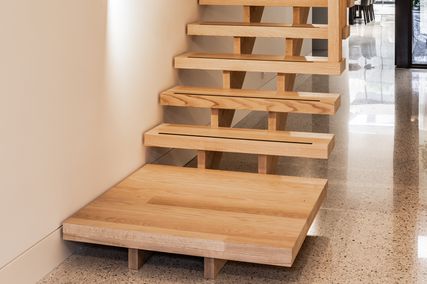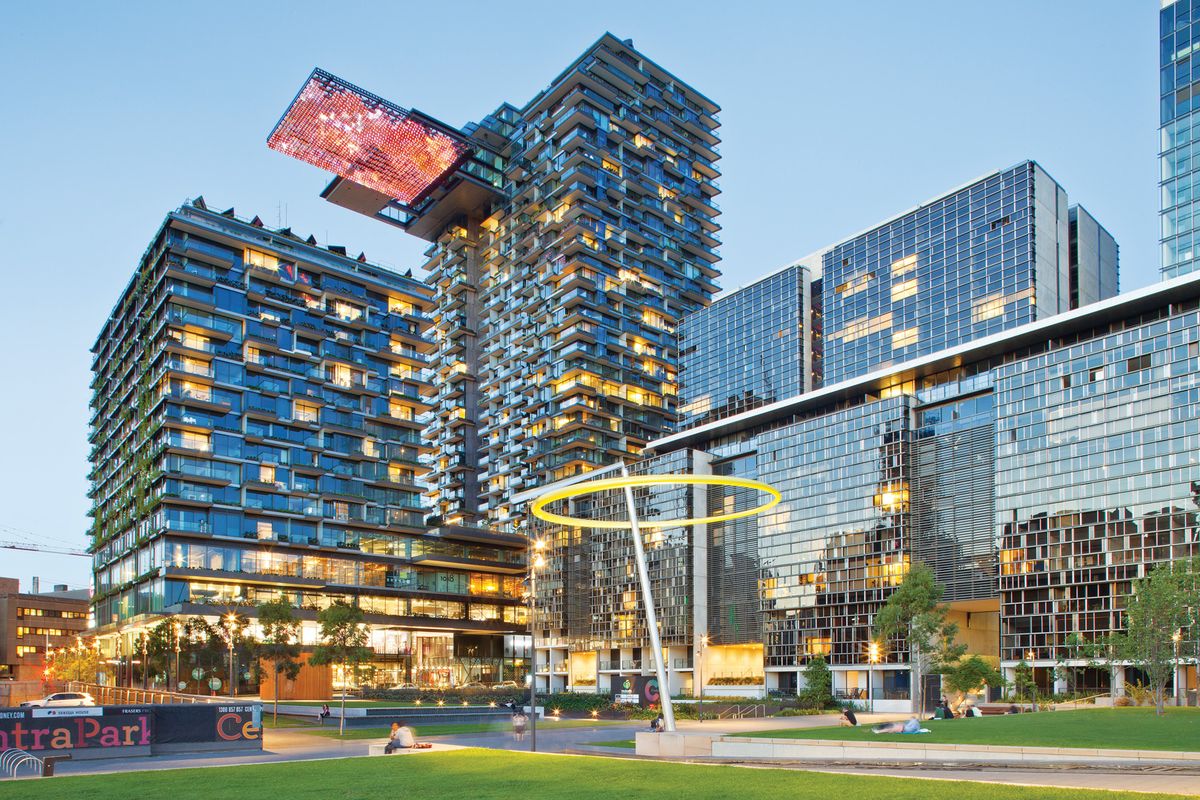Big towers dominated last Friday’s 2014 Urban Taskforce Development Excellence Awards, with five of the 10 awards going to high density developments.
The Urban Taskforce is a lobby group for the property industry and its annual Development Excellence Awards program recognises projects that achieve, in its words, “best outcomes in terms of client requirements, environment, business and community considerations.”
This year’s top award, Development of the Year, went to the apartment tower complex One Central Park on Sydney’s Broadway, designed by Ateliers Jean Nouvel in conjunction with PTW Architects and Smart Design Studio for developers Frasers Property and Sekisui House.
One Central Park was designed by Ateliers Jean Nouvel in collaboration with PTW Architects and Smart Design Studio.
Image: Simon Wood
As the chair of the judging panel, NSW Government Architect Peter Poulet, said “It is pleasing to see quality of apartment buildings, including the incredible One Central Park with its vertical gardens and the giant cantilevered heliostat giving the image of a 21st century precinct.”
None of Melbourne’s freshly-minted multi-residential towers, however, were recognised in this year’s Development Excellence Awards program.
The High Density Residential Development award went to 80 storey residential tower Infinity, designed by DBI Design for Meriton, in Brisbane, while the Commercial Development award went to Grocon’s Liberty Place, a commercial tower in Sydney designed by Francis-Jones Morehen Thorp.
Continuing the high rise focus, the Innovative Development Award went to 8 Chifley Square by Rogers Stirk Harbour + Partners and Lippmann Partnerships for Mirvac. The Adaptive Re Use Development Award, meanwhile, went to the Panorama Apartments at Crows Nest, designed by JPRA for the Barana Group, which saw the conversion of a 16 storey commercial complex into 217 apartments.
Read John de Manincor’s review of One Central Park from the Urban Housing special issue of Architecture Australia.
Full list of winners:
Development of the Year
One Central Park, Sydney – Ateliers Jean Nouvel in conjunction with PTW Architects and Smart Design Studio. Developed by Frasers Property & Sekisui House.
High Density Residential Development
Infinity, Brisbane – DBI Design. Developed by Meriton.
Medium Density Residential Development
Eliza, Sydney – Tony Owen Partners. Developed by Ceerose.
Commercial Development
Liberty Place, Sydney – Francis-Jones Morehen Thorp (FJMT). Developed by Grocon.
Retail Development
Woolworths Balgowlah – Developed by Fabcot Pty Ltd/Woolworths.
Industrial Development
Jacfin Ricoh Development, Eastern Creek – Developed by Jacfin.
Mixed Uses Development
Hamilton Harbour, Brisbane – Cox Rayner. Developed by Leighton Properties & Devine.
Adaptive Re Use Development
Panorama Apartments, Crows Nest – JPRA. Developed by Barana Group.
Innovative Development
8 Chifley Square, Sydney – Rogers Stirk Harbour + Partners and Lippmann Partnerships. Developed by Mirvac.
Sustainable Development
171 Collins Street, Melbourne – Bates Smart. Developed by Charter Hall & CBUS Property.


















